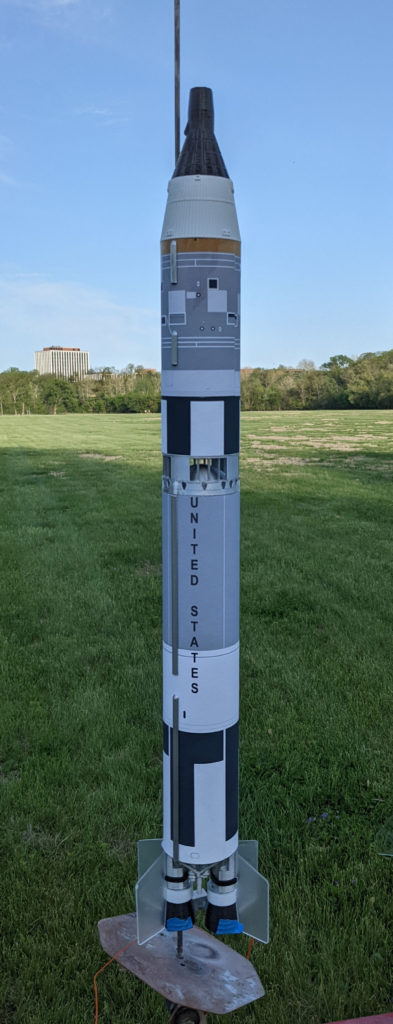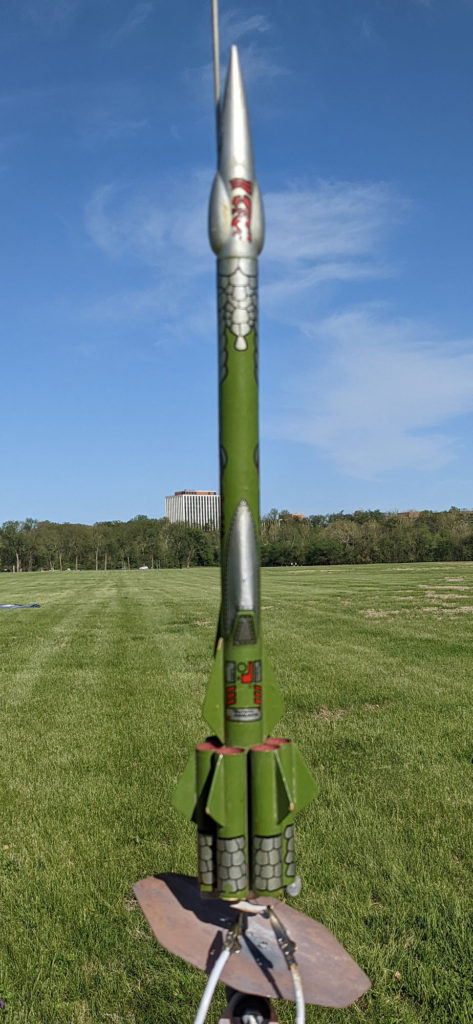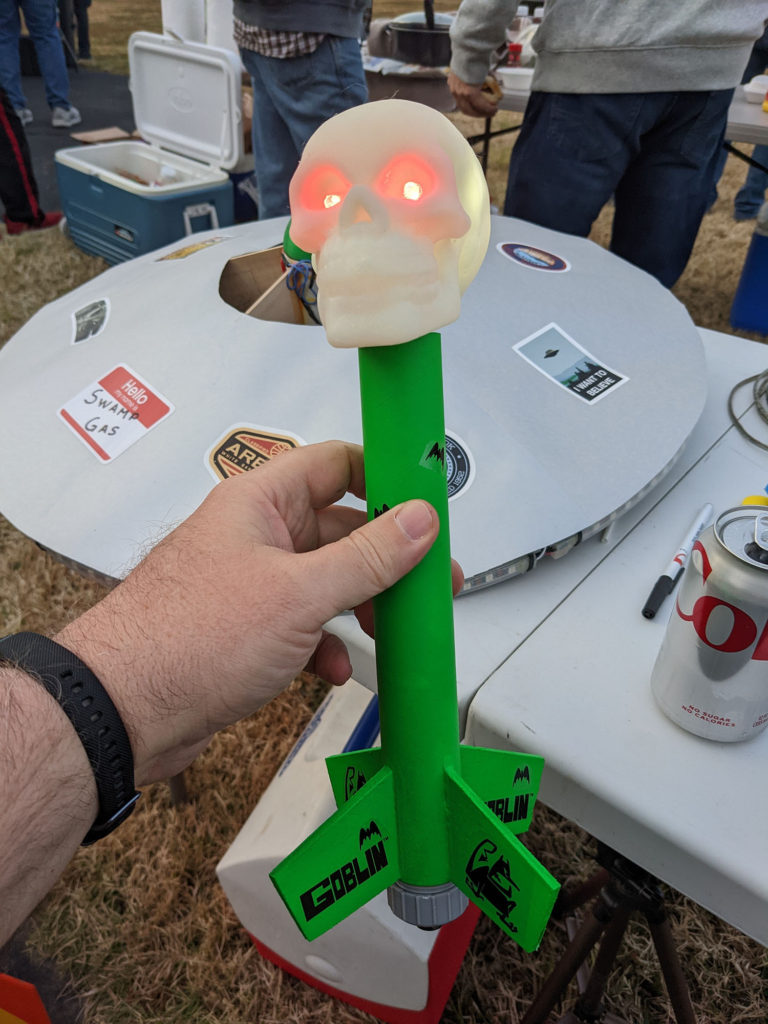The more time that passes, the more ridiculous it seems to start a blog entry with: “so, I see I haven’t updated this thing in a year and a half.” But here we are. This entry will be a two-parter: first, to talk about my limited rocketry activities last year, and second, to get into the new project I’m working on for 2023.
I haven’t actually been to a high-power launch since the previous blog entry. Our access to our local field is extremely limited for reasons I won’t go into here, so we couldn’t have a local launch in all of 2022 (and so far 2023 is shaping up the same way). I skipped AirFest because few of my St. Louis friends were going, and to me, that kind of trip is only worth the effort for the social aspect. And then I skipped Midwest Power in favor of going to our local Halloween low-power night launch (more on that in a sec). I don’t regret those decisions, but it does mean that I’m still sitting here with the Kerbal rocket having never flown, and the two-stage rocket having not flown successfully.
I made it to two low-power launches last year, though. In May, I flew a newly-built Boyce Aerospace Gemini-Titan scale model, along with my Estes Torellian Invader – the only finished rocket I still have that I built when I was a kid. I’m guessing that it was about forty years old, and had never flown. I was always too afraid of losing it, after all the work I had put into it. I’m pleased to say, though, that it flew on an A8-3 and was recovered successfully. The Gemini-Titan went up on a cluster of two composite D16-6 motors, but one of its parachutes came loose and it suffered some minor damage on impact. I think it’s repairable, but I still have not gone back to look at it. I also flew my Estes ready-to-fly SLS model.


St. Louis Rocketry Association now has a tradition of putting on a night launch at our low-power field on the Saturday closest to Halloween (2022 was the second year). In addition to the usual crew, several families showed up with kids in costume; we had giveaways of both rockets and candy for the kids. I brought three rockets to fly. The first was my Estes Ventris, which sort of fit the Halloween theme with its orange-and-black paint. It had a good flight, but came down into the trees on the south side of the field. It was recovered the next day by the parks department, but had been rained on and had a broken fin. It might be rebuildable – we’ll see.

The “Ghost Goblin” was my entry for the “Goblin Drag Race” event that was planned for the event, but the drag race part didn’t quite happen due to the chaos of the event and the fading light. I got the rocket on the pad right around dusk and it looked great. This is a stock Estes Goblin, but instead of a nose cone it has a 3D-printed skull with a small LiPo battery and some LEDs. The skull lights up white with red eyes.
Unfortunately, it too fell victim to one of the rocket-eating trees and was not recoverable. I plan to build a new one of these for 2023.
Finally, well after dark this time, was the second flight of my saucer rocket “Swamp Gas.” I did away with the rear-ejection recovery that I had tried to use before, and put a screw-on motor retainer on it. I also removed the old nose cone and replaced it with a new one that allowed for longer motors. This year, the rocket flew on an AeroTech G79 motor, which worked well.
That was my 2022 in a nutshell, from a rocketry perspective at least. It was a slow year (but not my slowest). I’m hoping to burn more motors in 2023!
